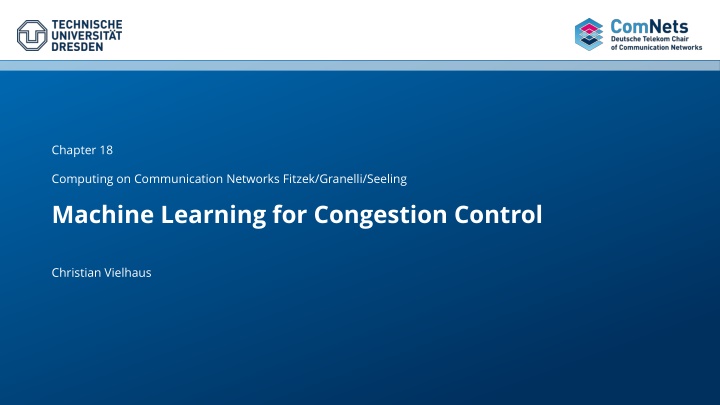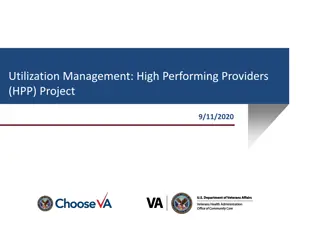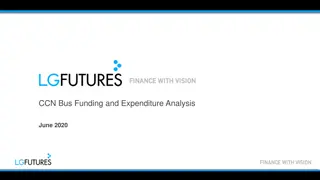
Machine Learning for Sender-Side Congestion Control on Communication Networks
Explore the utilization of machine learning to enhance sender-side congestion control strategies on communication networks. Understand the importance of finding optimal sending rates, minimizing queuing delay, and fairly sharing bottleneck bandwidth. Discover how machine learning can address the imperfections of manual algorithms in congestion management.
Download Presentation

Please find below an Image/Link to download the presentation.
The content on the website is provided AS IS for your information and personal use only. It may not be sold, licensed, or shared on other websites without obtaining consent from the author. If you encounter any issues during the download, it is possible that the publisher has removed the file from their server.
You are allowed to download the files provided on this website for personal or commercial use, subject to the condition that they are used lawfully. All files are the property of their respective owners.
The content on the website is provided AS IS for your information and personal use only. It may not be sold, licensed, or shared on other websites without obtaining consent from the author.
E N D
Presentation Transcript
Chapter 18 Computing on Communication Networks Fitzek/Granelli/Seeling Machine Learning for Congestion Control Christian Vielhaus
Introduction Goals of sender-side congestion control algorithms (there are more): Find a sending rate that utilizes the path capacity (critical factor: bottleneck link rate) Minimize queuing delay along the path Share bottleneck bandwidth fairly with others
Why machine learning? No manually designed algorithm is perfect. Can ML help? [1] Folie 3 Computing in Communication Networks Fitzek/Granelli/Seeling
Congestion occurs at the bottleneck! Packet flows
Congestion window limits the packets in flight Folie 5 Computing in Communication Networks Fitzek/Granelli/Seeling
Kleinrock point of optimality BDP: bandwidth-delay product Bq: Buffer size at bottleneck queue Folie 6 Computing in Communication Networks Fitzek/Granelli/Seeling
Agent design Observations: a history of sending rate, throughput, latency and loss rate signals (anything that can be observed or deduced) Rewards: maximize throughput, minimize latency and loss rate Actions: adjust congestion window size Folie 7 Computing in Communication Networks Fitzek/Granelli/Seeling
Testing on a path with a single source BDP = 420 segments Propagation delay = 140ms Folie 8 Computing in Communication Networks Fitzek/Granelli/Seeling
What about competition? Flows do not share the BDP fairly Folie 9 Computing in Communication Networks Fitzek/Granelli/Seeling
Sources [1]: https://commons.wikimedia.org/wiki/File:Comic strips Linux BBR.svg





